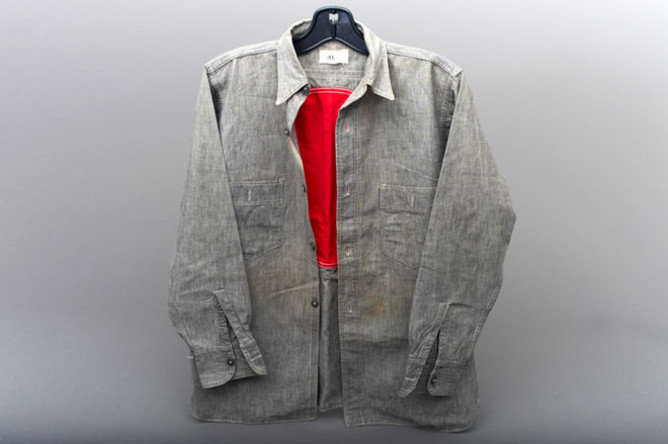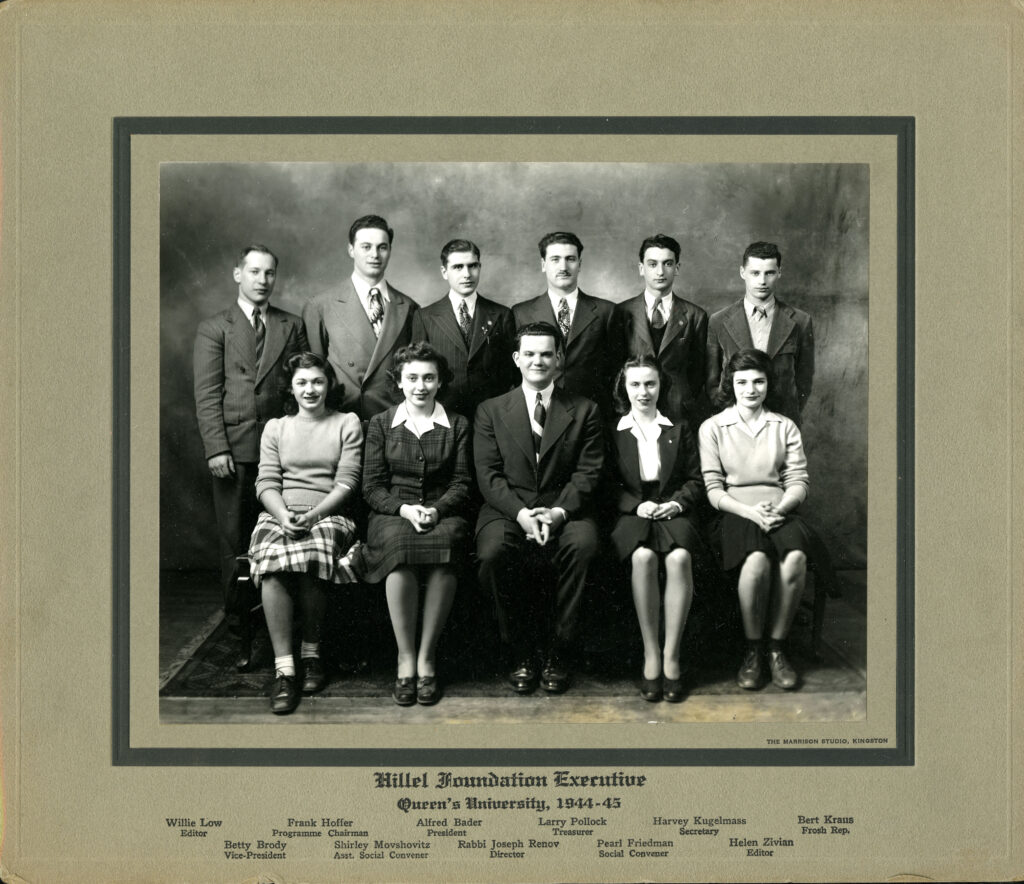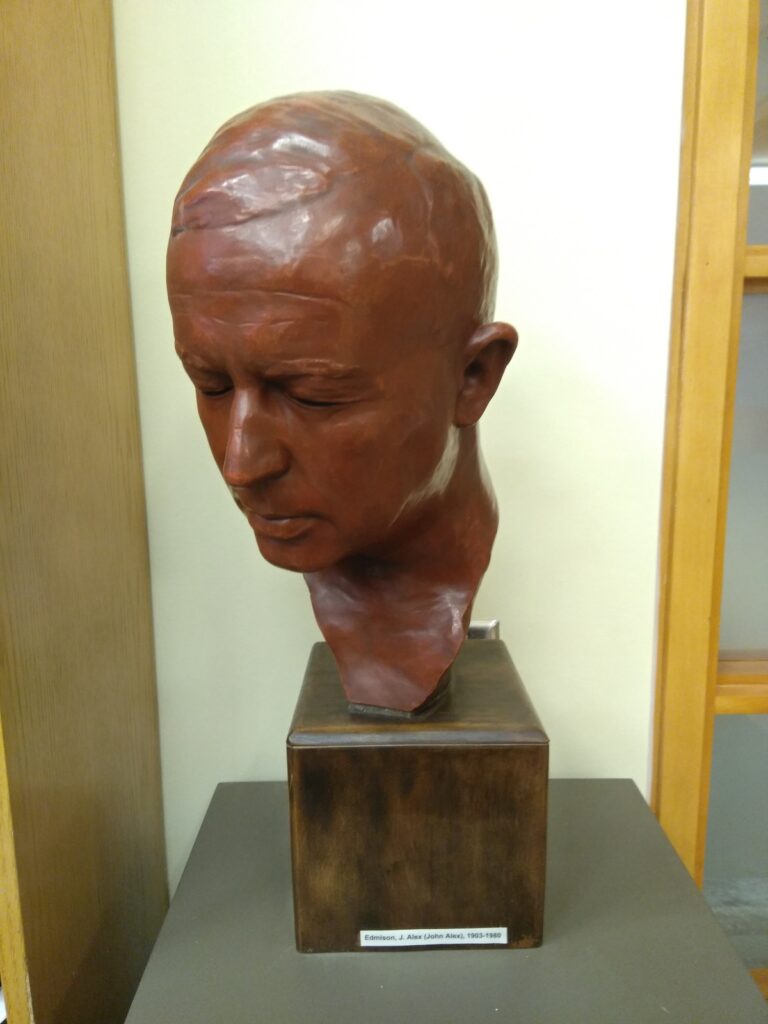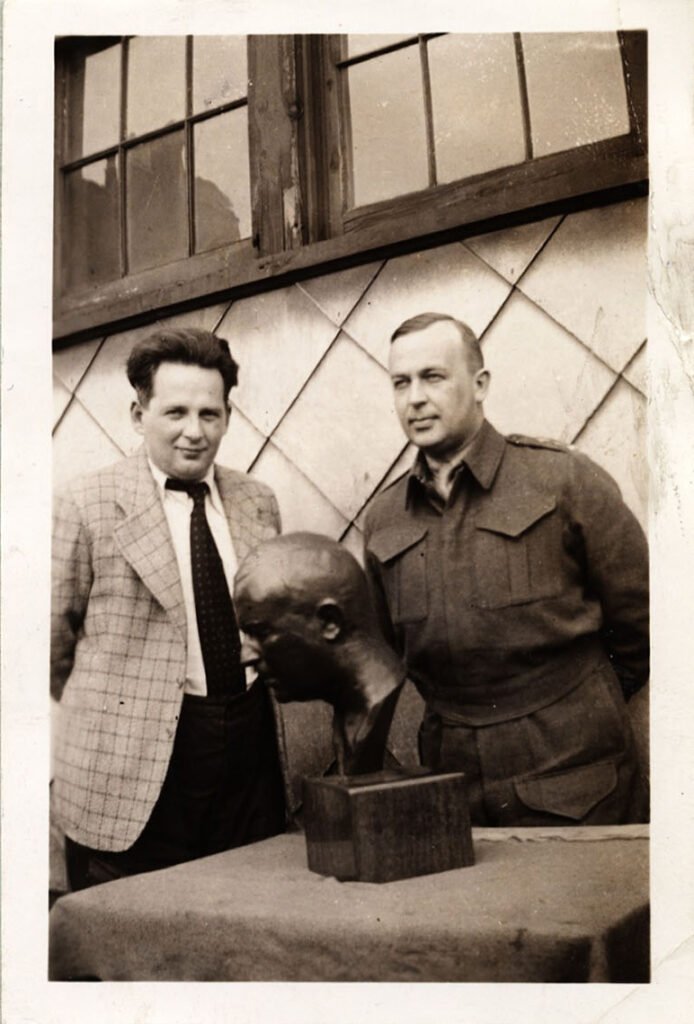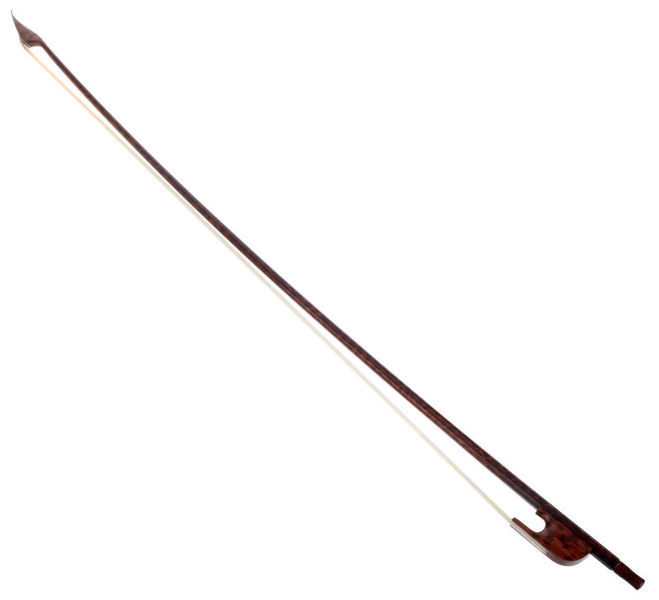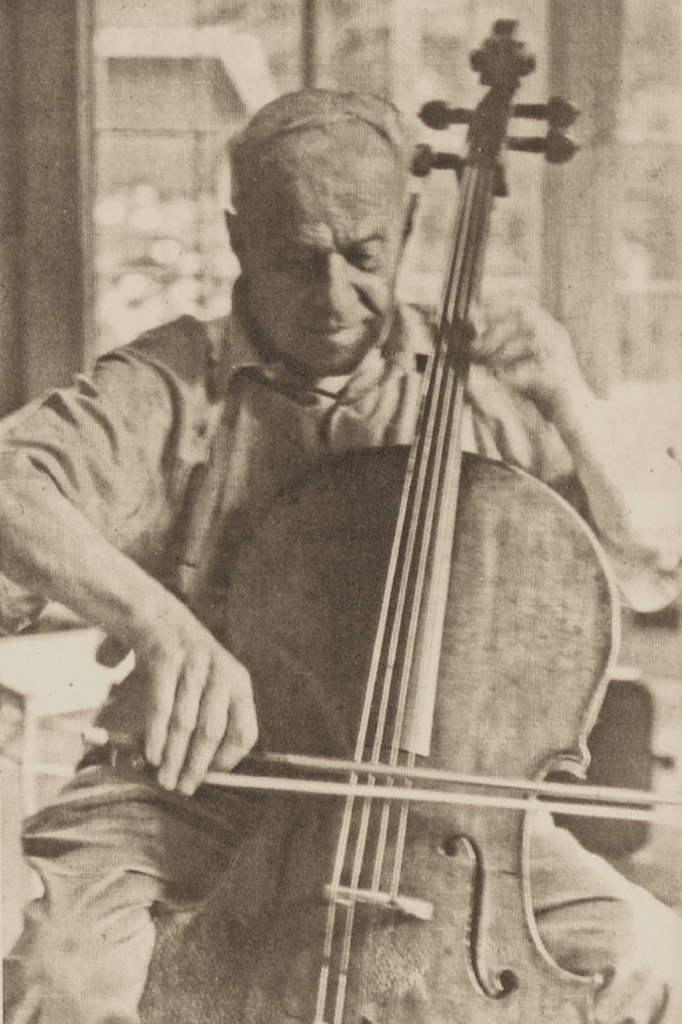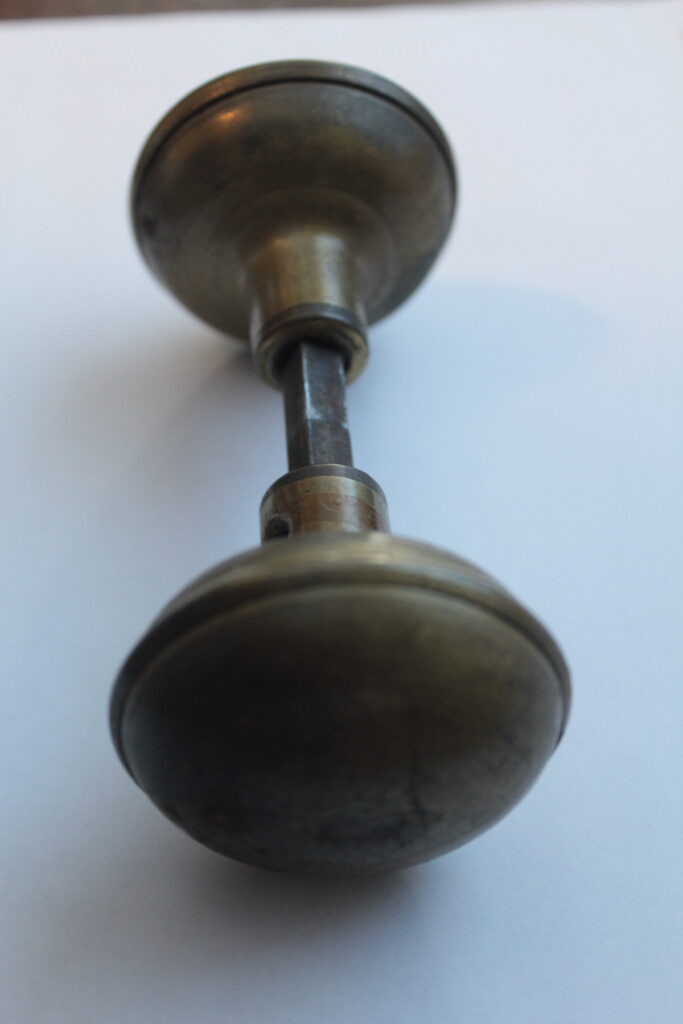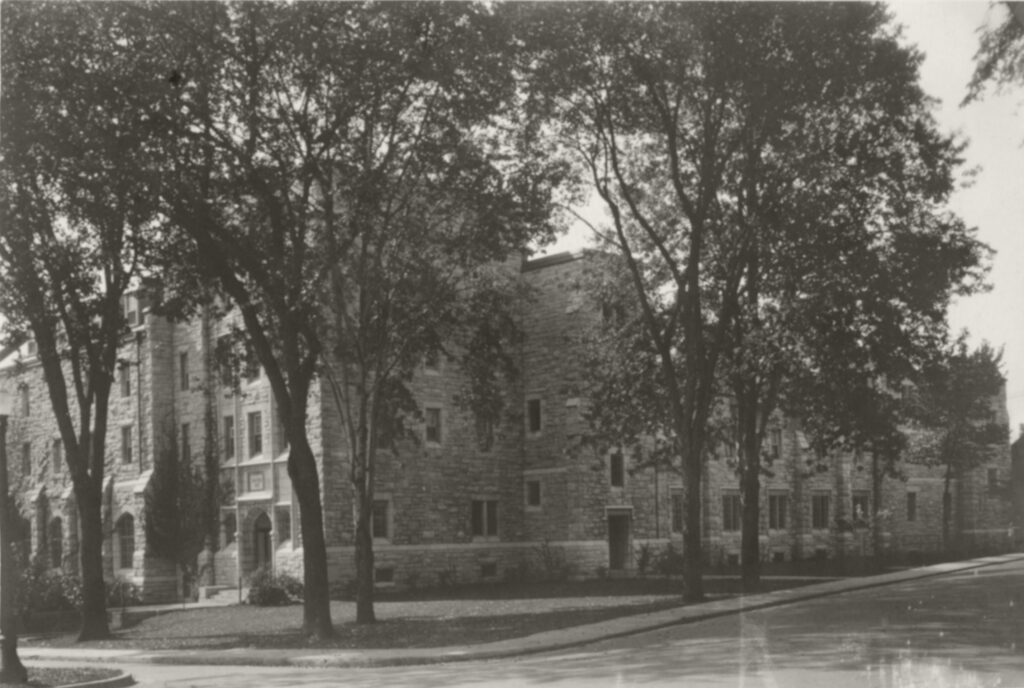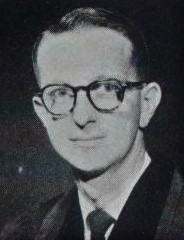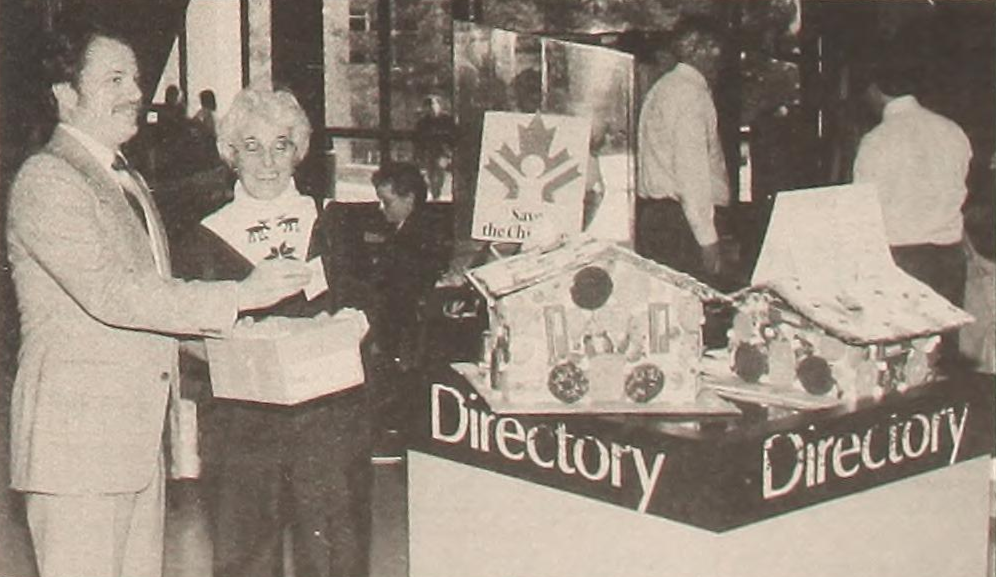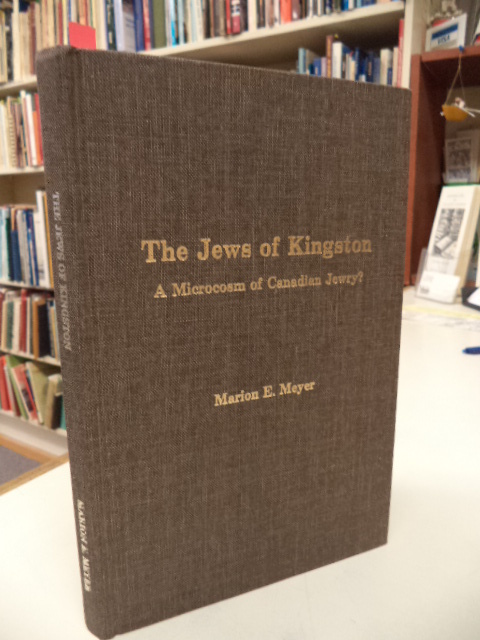Queen’s Refuge has partnered with the Kingston Pump House to further explore and demonstrate forced migration leading to Queen’s University. The exhibition at the Pump House is part of Pier 21’s Travelling Exhibitions entitled “Refuge Canada,” which takes visitors through five different themes: life before, fear, displacement, refuge, and life in Canada. There are currently six of our stories being told at the Kingston Pump House, and included here as well.
Refugees from Nazi persecution reached Kingston and Queen’s University throughout the 1930s and 40s, but only in small numbers. Some of their stories are told here, shedding light on aspects like internment, relief, transit, and arrival.
Kingston and Queen’s University were no major destinations for refugees from Nazi persecution, first in Germany and later all over Europe. Immigration restrictions and prejudices on the one hand, and the lack of opportunities to cross the Atlantic Ocean on the other were the main reasons. Nevertheless, people in Kingston and at the university began to advocate for these refugees.
The largest group of refugees were those interned as enemy aliens in Britain after the outbreak of World War II and deported to Canada in 1940, among them ca. 2,000 Jewish refugees from Germany or Austria. Only 235 were granted study releases from the Canadian internment camps until the end of 1943. Some of them were accepted at Queen’s University as students.
A few additional refugee scholars found refuge at the university based on relief efforts of individuals, groups, or organizations: they organized travel, accommodation, fellowships, and the new beginning in Kingston. Other refugees arrived only after the war when immigration restrictions were lifted. The refugee routes to Queen’s varied individually throughout the 1930 and 40s.
The refugee biographies presented here are connected to various aspects: solidarity and rejection at the same time since anti-Semitism was still an issue at Queen’s University in the 1940s. To integration into the community on different levels, and onward migration when the war was over. And to relief efforts for other refugees after 1945.
Alfred Bader (1924-2018)
Picture: Queen’s Hillel Foundation Executive Committee with Alfred Bader in the back row, third from the left, 1944, Queen’s University Archives
Alfred Bader was born in Vienna. In 1938, he was no longer allowed to attend school because of anti-Semitic laws. He was sent to Britain with a Kindertransport the same year, interned in 1940 as an enemy alien, and deported to Canada with other refugees. His shirt from Camp I (Île-aux-Noix, Quebec) documents his internment in Canada: the red dot was initially on the outside to identify escaped prisoners. Bader later turned this backside of the shirt outside-in.
Bader was released from internment after 15 months and accepted at Queen’s University. In January 1943, 17 other formerly interned students studied in Kingston, supported by the Scholarship Fund for Refugee Students and organizations on campus. At Queen’s University, Bader became a part of the student community and was involved in the newly founded first Hillel House on a Canadian campus as a center for Jewish students. He earned his bachelor and master in chemistry and a bachelor in history, followed by his Ph.D. in organic chemistry at Harvard University in 1950. Bader became a successful businessman in the US, an art collector – and a generous donor to Queen’s University.
John A. Edmison (1903-1980)
Picture: John A. Edmison with sculptor Johannes Schmit and bust in Camp N, April 1941, Queen’s University Archives
John A. Edmison was born in Cheltenham, Ontario. He studied arts at Queen’s and law at McGill University. In 1940, Edmison was enlisted and became camp assistant adjutant of Internment Camp N Sherbrooke, Quebec, housing both German prisoners of war and internees persecuted by the Nazis. This bust made from plaster was created here by internee sculptor Johannes Schmit.
From June 1941 on, Edmison served in the Canadian headquarters in London. In November 1944, he became deputy regional director for displaced persons in Europe; two months later, he was appointed by the United Nations Refugee and Rehabilitation Administration (UNRRA) as chief liaison officer to the headquarters of the Allied Expeditionary Forces. Edmison organized aid for concentration camp survivors, refugees, and displaced persons in France and Germany. He returned to Kingston as assistant to the Principal of Queen’s University and was a member of the board of Queen’s Theological College for forty years. In 1974, he received an honorary doctor of laws degree.
Gerhard Schmidt (1901-1981)
Picture: Gerhard Schmidt playing the Violin, ca. 1950. In: B. David Stollar, Out of Nazi Germany in Time, a Gift to American Science: Gerhard Schmidt, Biochemist, (Philadelphia 2014), figure 20
Gerhard Schmidt was a biochemist from the University of Frankfurt in Germany, where he lost his job in April 1933 because of the anti-Semitic civil service laws. Following fellowships in Italy and Sweden, Schmidt was a research fellow in biological chemistry at Queen’s University from 1935 to 1937 with a fellowship of the Carnegie Corporation and the Emergency Committee in Aid of Displaced Foreign Physicians.
Schmidt is an example for Kingston as a transit point of refugees: he was a research assistant at the Rockefeller Institute for Medical Research in New York already in 1937, in 1955 he became a professor of biochemistry at Tufts University. Moreover, Schmidt played the violin and the cello; he performed regularly in productions and concerts held by Queen’s clubs and other community events. This violin bow represents the enrichment refugees often bring.
Krystyna Zbierańska
Picture: Ban Righ Hall on Queen’s campus, late 1930s, Queen’s University Archives
Krystyna Zbierańska was born in Cracow, Poland, and a graduate in literature and language studies from Cracow University. Later she studied in Clermont-Ferrand and received Ph.D. in law in Rome. In 1934, she returned to Cracow university, made a master in philosophy and fled the Soviet occupation in Fall 1939 to France. After the German invasion in May 1940, she fled to Britain with her husband. In January 1940, the Refugee Committee of the Alumni Association at Queen’s University received permission to assist a refugee scholar and selected her in August. In January 1941, Queen’s Journal reported the long-expected arrival of “Madam Krystyna Zbieranska, Polish refugee scholar.”
At Queen’s, Zbierańska gave talks about the necessity of increased aid for Britain. She worked on a study of Canadian civilization, published on Polish literature and conducted research on French and French-Canadian literature. She left Queen’s University by the end of 1942. The Refugee Committee supported five more students after her, for example, from Czechoslovakia, Hungary and the Netherlands. In 1943, Zbierańska was the curator of the exhibition “Poland’s Past and Present” in the Redpath Library at McGill in Montreal. After being employed at the Toronto Public Library in 1945, she left Canada and became a librarian at the Cathedral College in New York. The doorknob represents the privacy she got at Queen’s where she took residence in Ban Righ Hall.
Hanns Skoutajan (1929-2015)
Picture: Hanns Skoutajan in the Tricolor ’56 (Kingston: Alma Mater Society 1956), p. 45, Queen’s University Archives
Hanns Skoutajan was born in Czechoslovakia, his family fled to Britain after the German occupation of North Bohemia in 1938. One year later, they arrived as “resettlers” in Batawa near Kingston, a village founded by Czech refugee entrepreneur Thomas J. Bata who brought his shoe production and partly his workers to Canada.
Skoutajan was a graduate from the Theological College at Queen’s University and became a United Church minister. Already in 1956, he was active in organizing relief for refugees from Hungary. A small group of 21 Hungarian students arrived after the failed uprising at Queen’s too. He was still involved in organizing relief in the 1980s when refugees from Southeast Asia arrived in Canada. The honorary degree Skoutajan received from Queen’s University in 1986 explicitly mentioned these activities directly linked to his own refugee experience.
Marion E. Meyer (1924-2017)
Picture: Marion E. Meyer selling gingerbread houses for Amnesty International, Queen’s Journal, November 29, 1985, p. 5, Queen’s University Archives
Marion E. Meyer (née Klein) was born in Berlin, her family fled Nazi persecution in 1934 to Paris. After the German occupation of France, Meyer found refuge in Switzerland. After the war, she returned to Paris, received a fellowship at Sorbonne, and continued her studies with a master in sociology at the New School in New York in her fourth language English.
In 1956, she came to Canada with her husband and was first a lecturer, later a Professor of Sociology at Queen’s University until the 1980s. Her book “The Jews of Kingston” from 1983 documents an arrival after many stages of flight and migration – and the role of the community even after retirement: she was engaged with The Jewish Community Council and the Kingston Youth Shelter. Together with her husband, she has been a tour guide at Kingston City Hall.
